With the Bay of Plenty being a boating and water-sport mecca in summer months, the Department of Conservation is encouraging users to share their share sightings of protected species.
DOC marine technical advisor Clinton Duffy says recreational fishers and others out on the water can make a significant contribution to research through reporting sightings and accidental catches.
“I’m very interested in what the public has seen – and usually they’re keen to identify an unusual creature too. All photos, videos and reports help build a better understanding of our rare and protected fishes, including rays, and sharks,” says Clinton.
“We encourage people to take a few photos, full length shots and also of any defining features like fins, jaws and teeth, and details of the colour pattern. The exact location the fish was spotted or caught is useful too.”
Nine species protected
There are nine fish species that are protected in New Zealand under the Wildlife Act – five sharks, two rays, and two grouper.
The five protected sharks are the basking shark, great white shark, oceanic whitetip, smalltooth sandtiger (deepwater nurse shark), and whale shark.
The two protected rays are the spine-tailed devil ray, and the giant manta ray. The two protected bony fishes are the giant grouper (Queensland grouper), and the spotted black grouper.
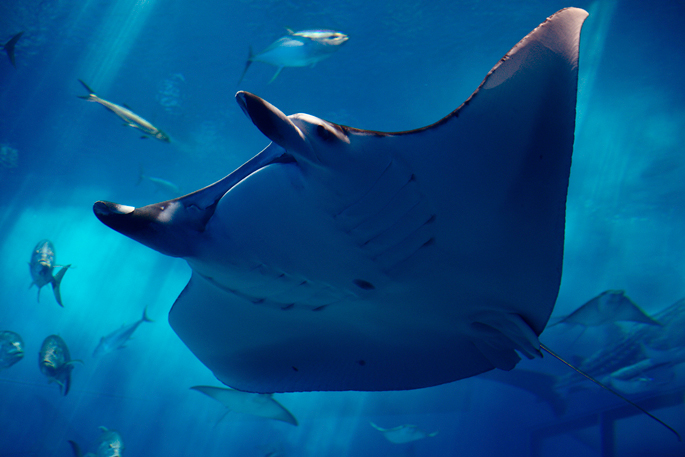 Giant Mantaray. Photo: Ken Funakoshi. CC-BY-SA-2.0.
Giant Mantaray. Photo: Ken Funakoshi. CC-BY-SA-2.0.
Clinton says all nine protected species have been reported from the BOP – however the rarest would be the basking shark, oceanic whitetip shark, spotted black and giant grouper.
“Species such as whale shark, oceanic whitetip shark, manta ray and spinetail devil ray are generally seen in the outer parts of the Bay during summer and early-autumn.
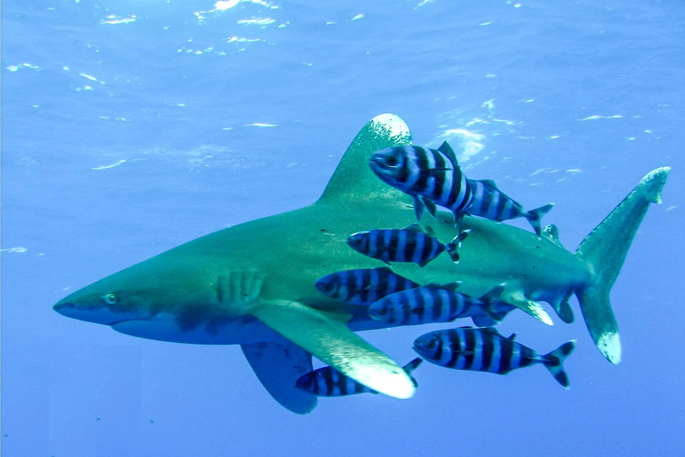 Rare fish sightings encouraged SH 010 Oceanic Whitetip Shark. Photo: Johan-Lantz-CC-BY-SA-3.0-ed.
Rare fish sightings encouraged SH 010 Oceanic Whitetip Shark. Photo: Johan-Lantz-CC-BY-SA-3.0-ed.
“Smalltooth sandtiger is a deep-water species, generally found below 100m depth but has occasionally been seen by divers at Whakaari/White Island; they are known to aggregate on certain reefs, much like their shallow water relative the grey nurse shark, Te Paepae o Aotea (Volkner Rocks) is one of the few known aggregation sites for the species in NZ,” says Clinton.
Great whites, predominantly juveniles, are found throughout the Bay of Plenty and have been frequently encountered in the harbour since about 2016, particularly around the Bowentown entrance, says Clinton.
 The Giant grouper (Epinephelus lanceolatus) at the Ripley’s Aquarium of Canada. Photo: CC BY-SA 2.5 ca.
The Giant grouper (Epinephelus lanceolatus) at the Ripley’s Aquarium of Canada. Photo: CC BY-SA 2.5 ca.
“Both grouper species occur in shallow reefy areas, generally less than 30m depth. Spotted black grouper encountered around mainland NZ are generally around 50cm length, at that size they are very cautious and usually avoid divers by hiding in caves – these often have multiple exits.
“Giant grouper can reach 2.7m in length and 300kg in length weight; adults and the brightly coloured (yellow and black) juveniles have been recorded from NZ, and there has been at least one sighting of an adult at the Aldermen Islands.
“Leatherback and green turtles are reported fairly regularly from the Bay and we would appreciate photographs and images of those too.”
Release if caught
According to DOC, certain fish species are protected because they are naturally uncommon and therefore at greater risk of extinction than other fishes.
“Factors that make them naturally uncommon can include being slow to mature, which means they must survive a longer time before they can reproduce or having a slow reproduction cycle or a low number of offspring,” says Clinton.
While fishers are not allowed to target these species, it’s not illegal to accidentally catch a protected fish.
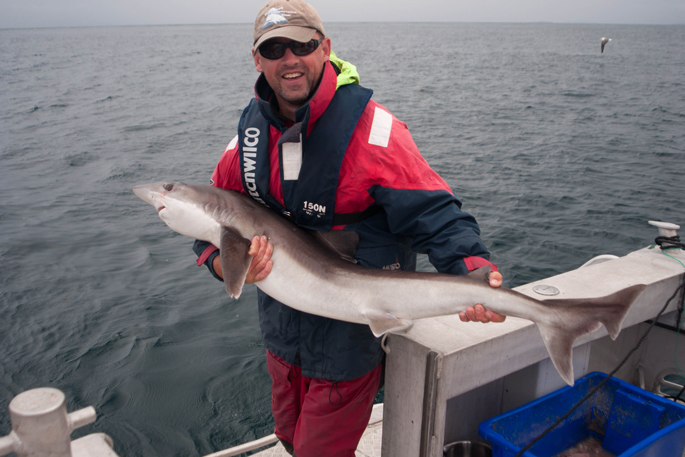 DOC marine technical advisor Clinton Duffy on a Stewart Island White shark trip. Photo: M P Francis-5.
DOC marine technical advisor Clinton Duffy on a Stewart Island White shark trip. Photo: M P Francis-5.
Clinton says if you do catch one, you must release it as quickly as possible and take care not to cause it further harm, and you must report the capture to DOC.
If the fish dies or is found dead, DOC may request you bring it back to shore and provide it to DOC so samples can be taken to support research.
Basking shark
“Spotting an uncommonly seen species would be an amazing fishing story to tell. The basking shark, for example, has hardly been seen in our waters since the late-1990s. I’d be thrilled to get a report of one,” says Clinton.
DOC has a set of protected species identification guides on its website to help identify sea life, plus a protected species handling guide to assist recreational fishers to safely release marine life back to the water.
The public can report sightings, captures and strandings to DOC anonymously via the Protected Species Catch App; by emailing: sharks@doc.govt.nz Or by calling 0800 DOC HOT (0800 362 468).
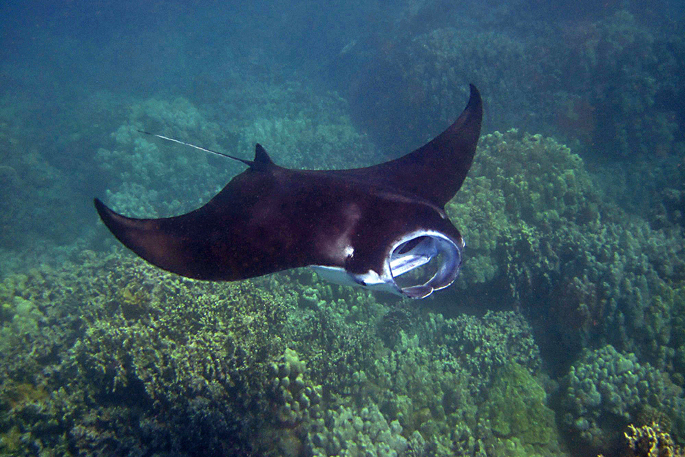 Giant Mantaray Photo: CC0 Public Domain.
Giant Mantaray Photo: CC0 Public Domain.
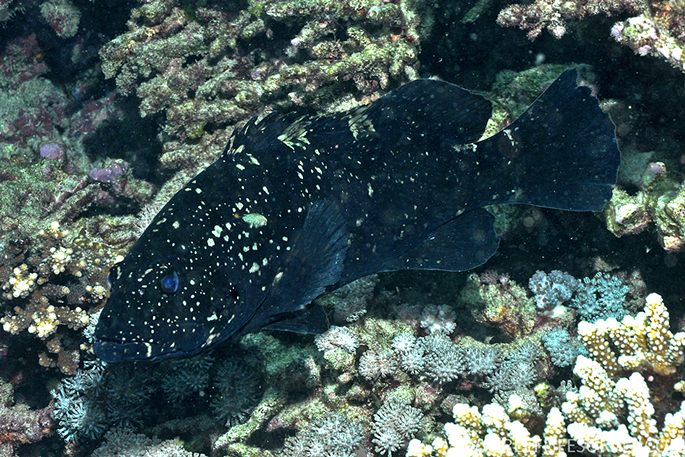 Spotted Black Grouper at Erscotts Hole, Lord Howe Island lagoon, in the Tasman Sea. Photo: Graham Edgar Reef Life Survey. CC-BY-Attribut.
Spotted Black Grouper at Erscotts Hole, Lord Howe Island lagoon, in the Tasman Sea. Photo: Graham Edgar Reef Life Survey. CC-BY-Attribut.
 Whale Shark. Photo: Erik Schogl. CC BY-NC 4.0 DEED.
Whale Shark. Photo: Erik Schogl. CC BY-NC 4.0 DEED.
 Green Turtle. Photo: Kris-Mikael Krister. Photo: CC-BY.
Green Turtle. Photo: Kris-Mikael Krister. Photo: CC-BY.
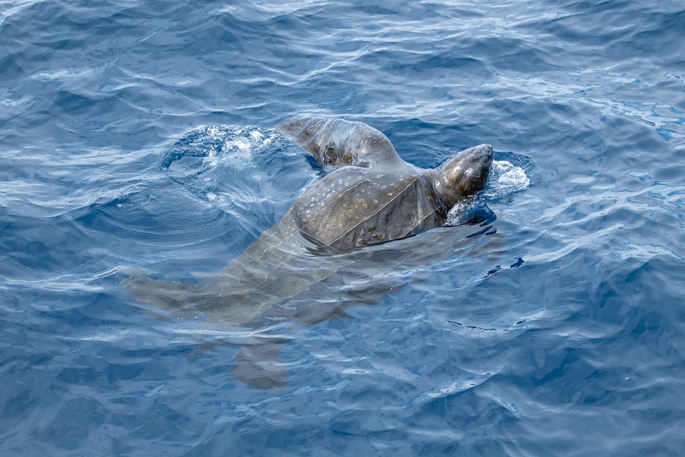 Leatherback Sea Turtle in BOP. Photo: Nathan Pettigrew.
Leatherback Sea Turtle in BOP. Photo: Nathan Pettigrew.

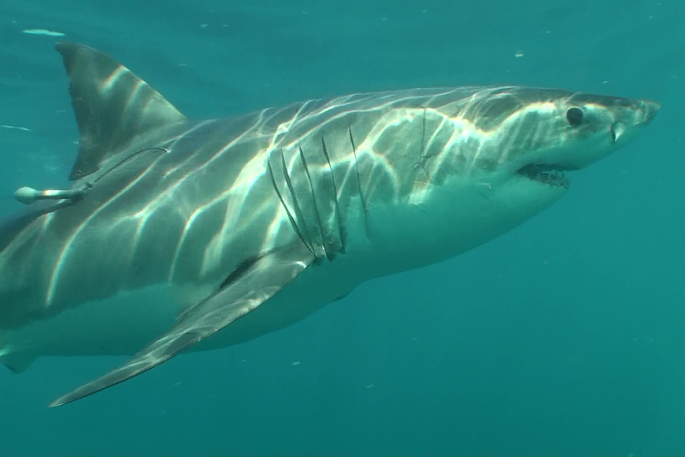

0 comments
Leave a Comment
You must be logged in to make a comment.